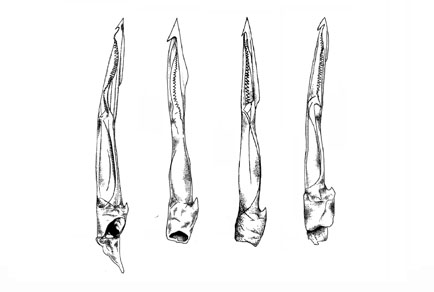Abstract
Radular morphologies of 22 species of the genus Conus from Indian coastal waters were analyzed by optical and scanning electron microscopy. Although the majority of species in the present study are vermivorous, all three feeding modes known to occur in the genus are represented. Specific radular-tooth structures consistently define feeding modes. Species showing similar feeding modes also show fine differences in radular structures. We propose that these structures will be of value in species identification in cases of ambiguity in other characteristics. Examination of eight discrete radular-tooth components has allowed us to classify the studied species of Conus into three groups. We see much greater inter-specific differences amongst vermivorous than amongst molluscivorous and piscivorous species. We have used these differences to provide a formula for species identification. The radular teeth of Conus araneosus, C. augur, C. bayani, C. biliosus, C. hyaena, C. lentiginosus, C. loroisii, and C. malacanus are illustrated for the first time. In a few cases our study has also enabled the correction of some erroneous descriptions in the literature.

